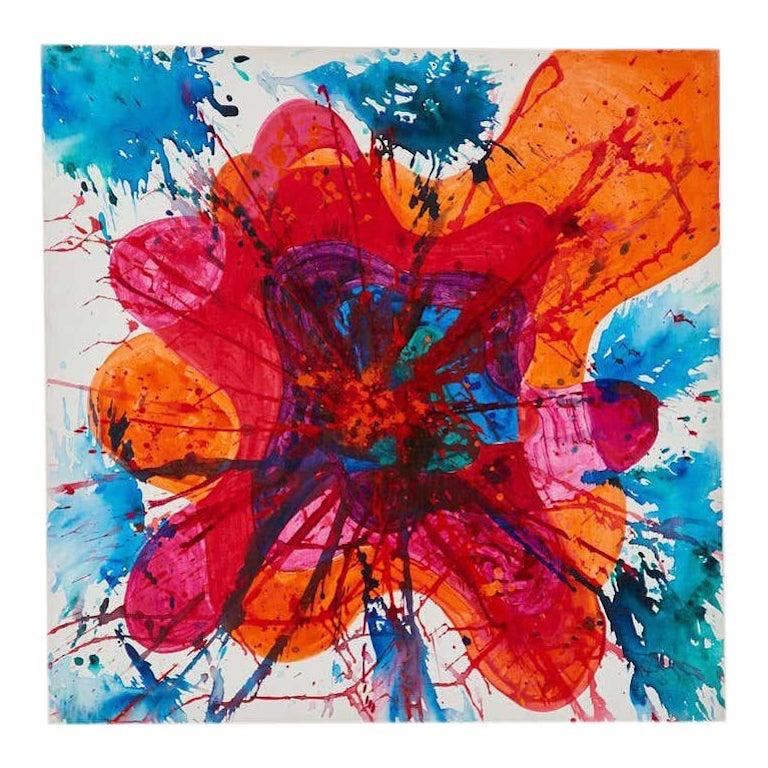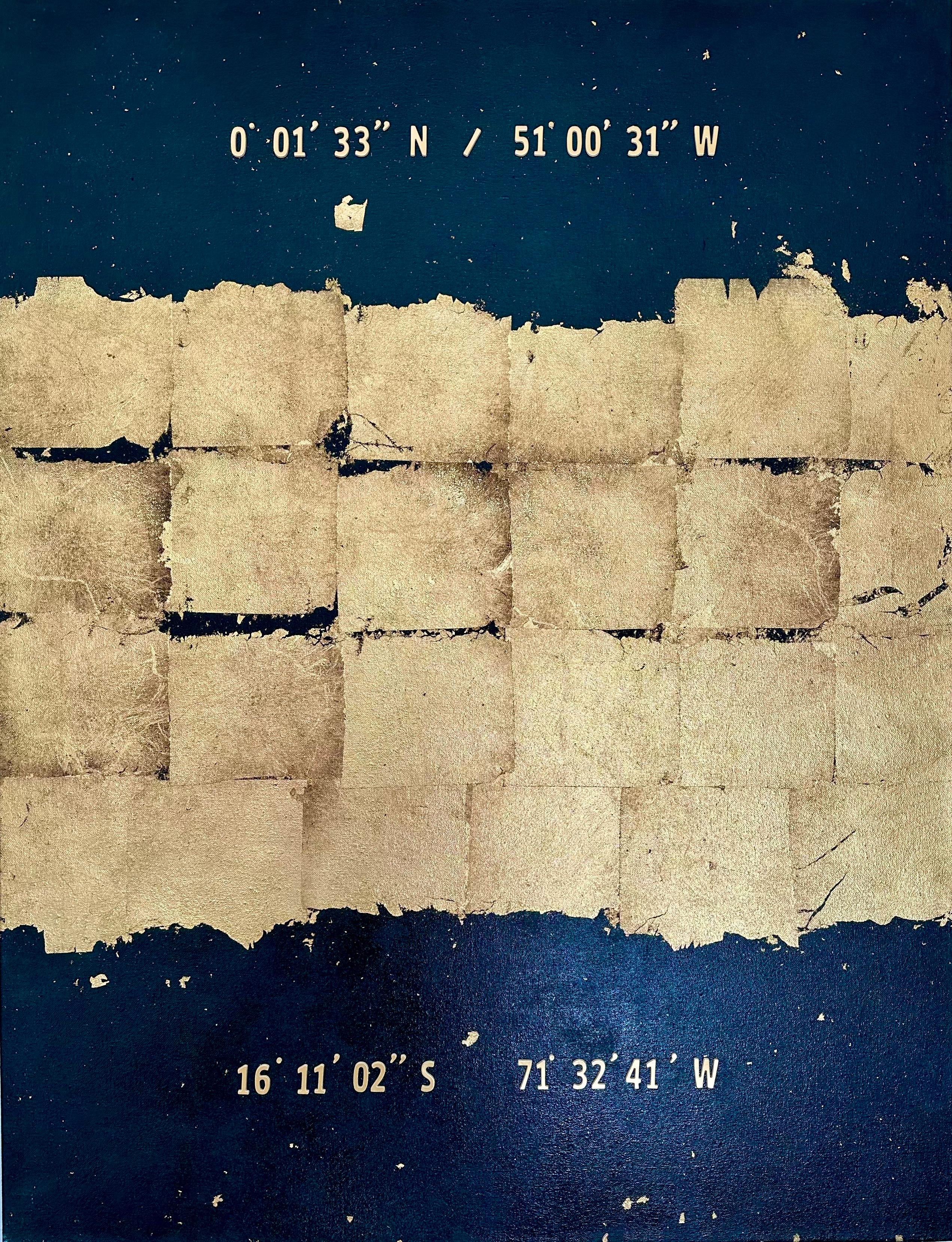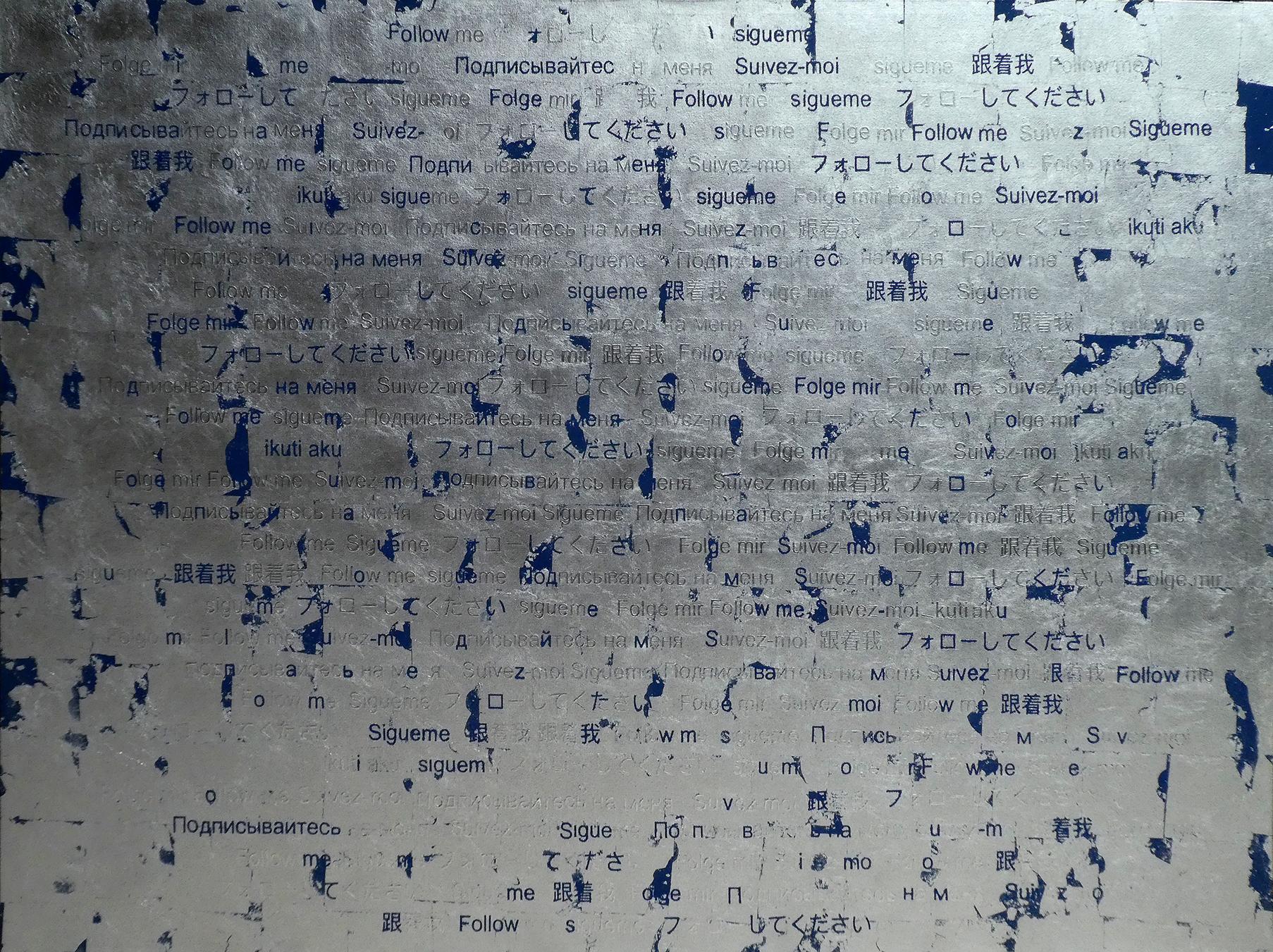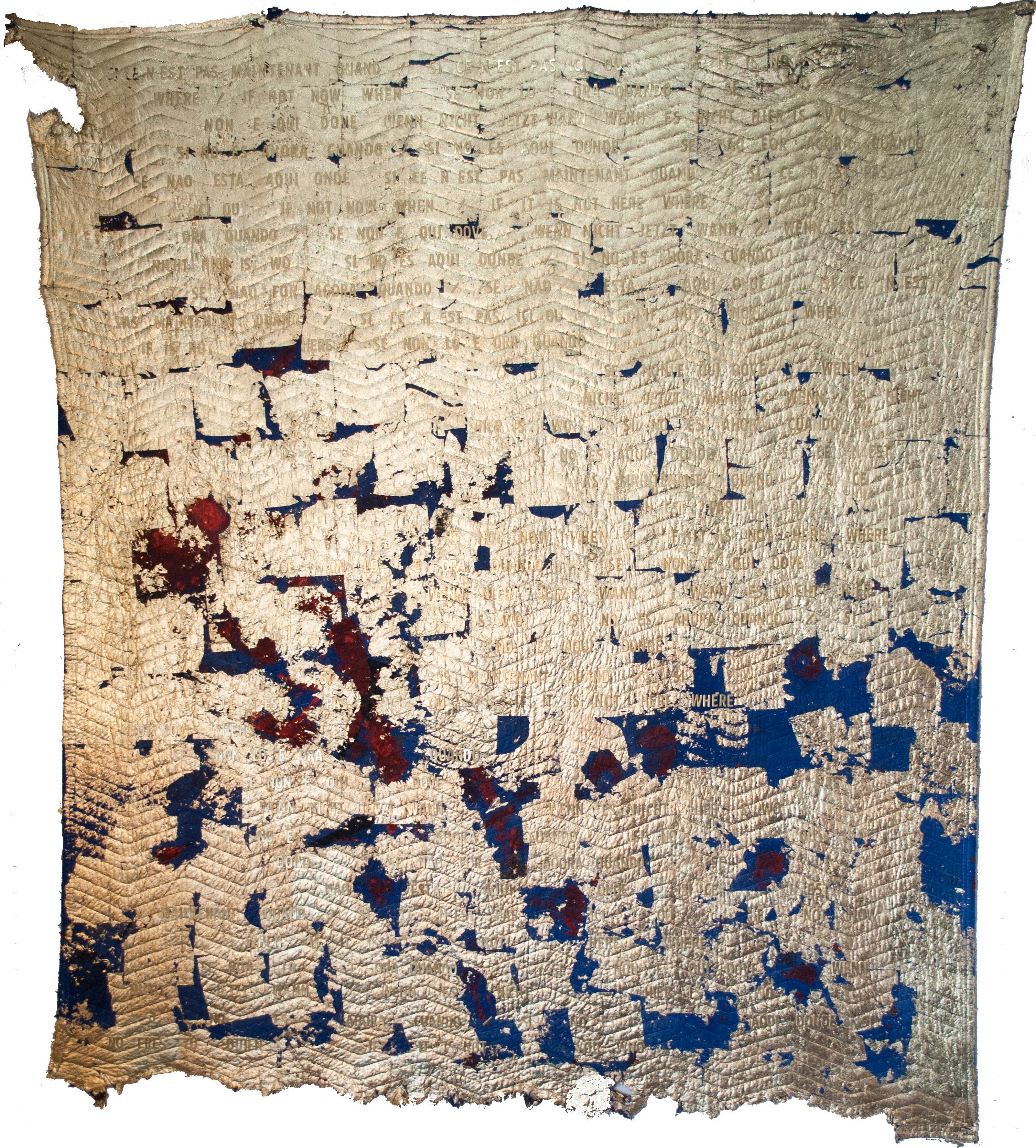Items Similar to Things of this World, Abstract Oil Painting
Want more images or videos?
Request additional images or videos from the seller
1 of 7
Alan TompkinsThings of this World, Abstract Oil Painting
About the Item
Genre: Modern
Subject: Abstract
Medium: Oil
Surface: Canvas
Country: United States
Dimensions: 18" x 24"
Dimensions w/Frame: 18.5" x 24.5"
Cubist Surrealism, reminescent of the Later Pop Art works of Roy Lichtenstein. Alan Tompkins a prolific artist, he continued to paint into his 100th year and strongly desired one thing: to be remembered for his art. “I’m not a hobbyist, I’m not an educator,” said Tompkins. “I want to be remembered as a painter.”
Tompkins produced thousands of paintings, many showing the influence of Cubism and abstract art, during a long and productive career.
Tompkins played a pivotal role in the formation of the University of Hartford. He was director of the Hartford Art School in 1957 when it merged with the original Hillyer College and the Hartt College of Music to become the University of Hartford. He served as director until 1969 and then taught art history and visual studies until his retirement in 1974. A graduate of Columbia University and Yale Art School, he taught painting at John Herron Art School, Cooper Union, and Columbia University. Tompkins also worked as a book illustrator, muralist, portraitist, industrial designer, and lecturer.
- Creator:Alan Tompkins (1907 - 2007, American)
- Dimensions:Height: 18.5 in (46.99 cm)Width: 24.5 in (62.23 cm)
- Medium:
- Movement & Style:
- Period:
- Condition:
- Gallery Location:Surfside, FL
- Reference Number:
About the Seller
4.9
Platinum Seller
These expertly vetted sellers are 1stDibs' most experienced sellers and are rated highest by our customers.
Established in 1995
1stDibs seller since 2014
1,548 sales on 1stDibs
Typical response time: 1 hour
- ShippingRetrieving quote...Ships From: Surfside, FL
- Return PolicyA return for this item may be initiated within 3 days of delivery.
More From This SellerView All
- Modernist Abstract Oil PaintingBy Hea Sook YooLocated in Surfside, FLHea-Sook Yoo, artist, internationally renowned, has her paintings hanging in residences, businesses and art galleries on three continents over three decades.Ms. Yoo is classically tr...Category
20th Century Modern Abstract Paintings
MaterialsCanvas, Oil
- Israeli Surrealist Judaica Abstract Oil Painting Naftali Bezem Bezalel SchoolBy Naftali BezemLocated in Surfside, FLShabbat Evening Large Israeli masterpiece painting. Hand signed lower right Provenance: Sara Kishon Gallery Naftali Bezem (Hebrew: נפתלי בזם; born November 27, 1924) is an Israeli painter, muralist, and sculptor. Bezem was born in Essen, Germany, in 1924. His early adolescence was spent under German Nazi oppression, in constant fear for the safety of his parents, who perished in the Holocaust in the Polish Auschwitz concentration camp. Naftali emigrated to Mandate Palestine in 1939, at the age of fourteen with a Youth Aliyah group. From 1943 to 1946, he studied art at the Bezalel Academy of Art and Design in Jerusalem with Israeli painter Mordecai Ardon. He then spent three years studying in Paris. His most famous public works include a mural wall relief sculpture at Yad Vashem, the Israeli Holocaust museum and commemoration in Jerusalem and the ceiling painting mural in the main reception room at the President's Residence, Jerusalem, Israel. He is also known for his stained glass windows and Aubusson style flat weave tapestry in many public and private places around the world. In 1957, Bezem was a co-recipient of the Dizengoff Prize for Painting. Exhibitions: General Exhibition, Art in Israel 1960 Tel Aviv Museum of Art Artists: Naftali Bezem, Nachum Gutman, Shraga Weil, Shraga, Marcel Janco, Ruth Schloss Yad Labanim Museum, Petach Tikva with David Azuz, Nachum Gutman, Moshe Gat, Shraga Weil, Lea Nikel, Ruth Schloss, Yosl Bergner, Anna Ticho, and Menashe Kadishman. Old and New in the Museum Collection, Yad Labanim Museum, Petach-Tikva Jacob El Hanani, Naftali Bezem, Yosl Bergner, Yossef Zaritsky, Yohanan Simon, Reuven Rubin, David Rakia...Category
20th Century Modern Abstract Paintings
MaterialsCanvas, Oil
- Israeli Modernist Abstract Expressionist Jerusalem Kotel Oil Painting JudaicaBy Efraim ModzelevichLocated in Surfside, FLEfraim Modzelevich (1931-1995) Work is abstract in subject, and expressive in terms of technique. The artist uses a muted color palette, and thick layers of paint to build up his co...Category
Mid-20th Century Modern Abstract Paintings
MaterialsCanvas, Oil
- Polish French Ecole de Paris Mid Century Modernist Oil Painting Clown JugglerBy Abram KrolLocated in Surfside, FLAbram Abraham Krol was born January 22, 1919, in Pabianice (Lodz), Poland. Abram Krol went to France in 1938 to study civil engineering at the University of Caen. In 1939 at the beginning of World War II he joined the Foreign Legion. After he was demobilized, he became a mechanic in a garage in Avignon. Although Jewish, he survived the war with a false identity. In 1943, Krol started studying to be an artist, taking courses in sculpture at the city’s School of Fine Art. He also began studying painting and self-described himself as a “Sunday painter.” Krol moved to Paris in 1944. The first exhibition of his work was in 1946 in the Katia Granoff Gallery in Paris. After the war, Krol took up engraving, studying that art form with an engraver he met in Paris. Krol reflected his Hasidic childhood often using Biblical themes in his art works. He said, During all my years of childhood I had read the Bible endlessly. I came back to the Bible because I was on solid ground there. It was part of the assertion of my own truth after a time of complacency. It seemed to me that in painting or engraving there were so many reefs to avoid, so many possibilities of setback, that I had to have all the odds in my favor do what I could—say what I had to say. Krol illustrated over 20 literary works from the late 1940s through the 1960s. He also engraved medals for the Paris mint and painted murals for schools in France. He designed tapestries and painted approximately 200 enamels. Museums and libraries which own Krol’s art works include the Bibliotheque Nationale in Paris; the Victoria and Albert Museum in London; the British Museum; Houghton Library, Harvard; Bodleian Library, Oxford, and the Palace of the Legion of Honor in San Francisco. Krol has had numerous one-man shows throughout Europe, Brazil, and in California. In 1960, Krol was invited to the Venice Biennale. He was awarded the Critics Prize in 1958. He also won the Feneon Prize among other honors. Krol died on October 9, 2001. The School of Paris, Ecole de Paris, was not a single art movement or institution, but refers to the importance of Paris as a center of Western art in the early decades of the 20th century. Between 1900 and 1940 the city drew artists from all over the world and became a centre for artistic activity. School of Paris was used to describe this loose community, particularly of non-French artists, centered in the cafes, salons and shared workspaces and galleries of Montparnasse. Before World War I, a group of expatriates in Paris created art in the styles of Post-Impressionism, Cubism and Fauvism. The group included artists like Pablo Picasso, Marc Chagall, Amedeo Modigliani and Piet Mondrian. Associated French artists included Pierre Bonnard, Henri Matisse, Jean Metzinger and Albert Gleizes. The term "School of Paris" was used in 1925 by André Warnod to refer to the many foreign-born artists who had migrated to Paris. The term soon gained currency, often as a derogatory label by critics who saw the foreign artists—many of whom were Jewish—as a threat to the purity of French art. Art critic Louis Vauxcelles, noted for coining the terms "Fauvism" and "Cubism", Waldemar George, himself a French Jew, in 1931 lamented that the School of Paris name "allows any artist to pretend he is French. it refers to French tradition but instead annihilates it. The artists working in Paris between World War I and World War II experimented with various styles including Cubism, Orphism, Surrealism and Dada. Foreign and French artists working in Paris included Jean Arp, Joan Miro, Constantin Brancusi, Raoul Dufy, Tsuguharu Foujita, artists from Belarus like Michel Kikoine, Pinchus Kremegne, and Jacques Lipchitz, the Polish artist Marek Szwarc and others such as Russian-born prince Alexis Arapoff. A significant subset, the Jewish artists, came to be known as the Jewish School of Paris or the School of Montparnasse. The core members were almost all Jews, and the resentment expressed toward them by French critics in the 1930s was unquestionably fueled by anti-Semitism. Jewish members of the group included Emmanuel Mané-Katz, Chaim Soutine, Adolphe Féder...Category
1950s Modern Figurative Paintings
MaterialsCanvas, Oil
- Large Oil Painting Israeli Pinchas Litvinovsky Jerusalem Israel Bezalel SchoolBy Pinchas LitvinovskyLocated in Surfside, FLPinchas Litvinovsky (Russian/Israeli, 1894-1985) A group of people, Jerusalem Types Hand signed indistinctly (lower right) in English and in Hebrew Verso. Oil on canvas Dimensions 16 1/8 x 51 1/16in Pinchas Litvinovsky (1894-1985) was a prominent Israeli painter, born in the Russian Empire (now Belarus) in Novo-Georgiyevsk, Russia. As a student he visited the Bezalel exhibition in Odessa and met Boris Schatz, the founder of the Bezalel School of Arts and Crafts. Schatz persuaded the young, talented student to study art in Jerusalem at Bezalel. He immigrated to Palestine in 1911, where he became a key figure in the local art scene and was among the pioneers of Israeli art. Litvinovsky studied art in Odessa and later in Paris at the Académie Julian. In the 1930’s he traveled to Paris, France where he encountered the art of Henri Matisse, Pablo Picasso and artists of the Ecole Juif Jewish School of Paris. (Marc Chagall, Modigliani, Chaim Soutine). Litvinovsky worked in many modernist styles, especially Cubism as reflected in the Russian constructivist paintings of the 1920’s His work, which includes landscapes, portraits, and biblical scenes, reflects a blend of European influences and Middle Eastern motifs. He was a member of the Bezalel group of artists and participated in the establishment of the Tel Aviv Artists' House. Throughout his career, Litvinovsky's art evolved, but he remained dedicated to exploring the unique light and landscapes of Israel, contributing significantly to the cultural fabric of the young nation. Select Group exhibitions Jewish Artists Association, Levant Fair, Tel Aviv, 1929 Artists: Arie Allweil, Ludwig Blum, Nachum Gutman, Itzhak Frenel Frenkel, Reuven Rubin, Shmuel Schlezinger, Eged - Palestine Painters Group, Allenby Street, Tel Aviv, 1929 Artists: Chana Orloff, Abraham Melnikoff, Sionah Tagger, Elias Newman, A Collection of Works by Artists of the Land of Israel The Bezalel National Museum, Jerusalem, 1940 Artists: Moshe Mokady, Jakob Steinhardt, Anna Ticho, Joseph Budko, Mordecai Ardon, Moshe Castel, Abel Pann, Hermann Struck, Rina Gallery, Jerusalem Artists: Motke Blum, Efraim Fima (Roytenberg, Ephraim) Zelig Segal, David Sharir, Joseph Halevi, David Caftori, Menashe kadishman, Dedi Ben Shaul, Raffi Lavie Exposition des Artistes de Jérusalem Grand Palais, Paris, France Artists: Samuel Ackerman, Marek Yanai, Zvi Tolkovsky, Zvi Miron Sima...Category
20th Century Modern Abstract Paintings
MaterialsCanvas, Oil
- Polish French Ecole de Paris Mid Century Modernist Oil Painting Clown JugglerBy Abram KrolLocated in Surfside, FLAbram Abraham Krol was born January 22, 1919, in Pabianice (Lodz), Poland. Abram Krol went to France in 1938 to study civil engineering at the Universit...Category
1950s Modern Figurative Paintings
MaterialsCanvas, Oil
You May Also Like
- Modern Abstract Oil PaintingLocated in Rio Vista, CADramatic abstract oil on canvas painting by Gladys Regier-Vaughan (American 1923-1987). Vaughan was a New York stage director who started painting in 1970. Signed and dated verso.Category
20th Century Modern Abstract Paintings
MaterialsCanvas, Oil
- Cangiante ArancioneBy Giulio TurcatoLocated in Firenze, FIGiulio Turcato (Mantova, 16 marzo 1912 – Roma, 22 gennaio 1995) è stato un artista italiano, fra i principali esponenti dell'astrattismo informale italiano.Category
1980s Modern Abstract Paintings
MaterialsCanvas, Mixed Media, Oil
- Amish Farmscape #3By Edmund LewandowskiLocated in Los Angeles, CAAmish Farmscape #3, 1984, oil on canvas, 40 x 30 inches, signed and dated lower right; signed, dated, and titled verso About the Painting Amish Farmscape #3 is part of a multi-painting series of barns completed in the early 1980s for an exhibition at New York’s prestigious Sid Deutsch Gallery. Lewandowski painted this work at an important point in his career. It was the first major project undertaken by Lewandowski after his retirement from serving as the Chairman of Winthrop University’s Art Department, the last academic position he held after teaching for nearly thirty years. Lewandowski had been inspired to work on the series by a visit to Lancaster County, Pennsylvania. Like his friend and mentor, Charles Sheeler, Lewandowski had always been fascinated by vernacular architecture and the Amish barns of Pennsylvania brought back memories of rural scenes Lewandowski had painted in the Midwest much earlier in his career. Amish Farmscape #3 is a strong example of Lewandowski’s late precisionist work. The complexity of the composition and Lewandowski’s technical acumen are on full display. Being relieved of the burdens of teaching and administering a university art department likely allowed Lewandowski greater freedom and most importantly more time to complete the Amish Farmscape series. Although Lewandowski’s brand of precisionism changed throughout the years, he never deviated from the core tenets of the Immaculate School artists. In this work, we see simplified and flattened forms, the use of ray-lines to define light and space, the elimination of extraneous details, a polished almost machine-like finish, and the complete lack of visible brushstrokes, all hallmarks of the precisionist painters. Lewandowski was the last of the 20th century precisionists and in Amish Farmscape #3, we see just how successfully he continued to work in this style until his death in 1998. About the Artist Edmund Lewandowski was among the best of the second-generation precisionist painters. He was born and raised in Milwaukee, Wisconsin and studied at the Layton School of Art with Garrett Sinclair. Lewandowski achieved early success when in 1936 two of his watercolors were shown at the Phillips Collection as part of a Federal Art Project exhibition. Then, in 1937, his work was first exhibited at Edith Halpert’s Downtown Gallery which represented Lewandowski into the 1950s. Under Halpert’s guidance, Lewandowski continued to explore watercolor as his main medium during the 1930s and 1940s, since the gallery already represented Charles Sheeler, who worked primarily in oils. Sheeler became Lewandowski’s major influence as the primary leader of the ill-defined, but very recognizable Immaculate School artists, which included other Downtown Gallery painters, Niles Spencer, George Ault, and Ralston Crawford, as well as Charles Demuth and Preston Dickinson, both of whom died at a young age and had been represented by the Charles Daniel Gallery. Sheeler is credited with giving Lewandowski technical advice on how to make his paintings more precise and tightly rendered and by all accounts, Sheeler was a fan of Lewandowski’s work. Through the Downtown Gallery, Lewandowski’s paintings were accepted into major national and international exhibitions and purchased by significant museums and collectors. Franklin and Eleanor Roosevelt and Nelson Rockefeller acquired works by Lewandowski. He was included in the Museum of Modern Art’s important 1943 exhibition, American Realists and Magic Realists as well as juried exhibitions at the Whitney Museum of American Art, the Pennsylvania Academy of Fine Arts, and the Art Institute of Chicago. Lewandowski also completed commissions for magazines during the 1940s and 1950s, including several covers for Fortune. Throughout his career, Lewandowski explored urban and rural architecture, industry, machinery, and nautical themes. Looking back on his career, Lewandowski wrote, “My overwhelming desire as an artist through the years has been to record the beauty of man-made objects and energy of American industry on canvas. For as far back as I can recall, the cityscapes, farms and depictions of industrial power and technological efficiency has had a great attraction for me. I try to treat these observations with personal honesty and distill these impressions to a visual order.” Lewandowski is credited with extending precisionism to the Midwest and successfully continuing the style into the 1990s, three decades after Sheeler’s death and six decades after Demuth’s passing. Late in his career, Lewandowski enjoyed a resurgence of popularity as he was represented during the 1980s by New York’s Sid Deutsch and Allison Galleries...Category
Mid-20th Century American Modern Landscape Paintings
MaterialsCanvas, Oil
- "Untitled" Painting 39" x 30" inch by Patricio GonzalezBy Patricio GonzalezLocated in Culver City, CA"Untitled" Painting 39" x 30" inch by Patricio Gonzalez Patricio Gonzalez Bezanilla (1974), studied at the School of Visual Arts at the University o...Category
21st Century and Contemporary Modern Interior Paintings
MaterialsGold Leaf
- "Follow me / Like me" Oil painting 79" x 59" inch by Patricio GonzalezBy Patricio GonzalezLocated in Culver City, CA"Follow me / Like me" Oil painting 79" x 59" inch by Patricio Gonzalez oil and silver leaves on canvas From "Looking for Happiness" series LOOKING FOR HAPPINESS Like "el dorado", a cultural construction, a myth, the Looking for happiness series talks about the illusion of happiness. Using coordinates between different geographical points and world views, seeking to generate a dialogue between stories. In this way, places speak to tell us about degraded utopias, religious crusades, martyrs and oppressors, wars, victories, and defeats. All searches for what cannot be found. The infinite existing possibilities, in this continuous present and its accumulation, to be history. The utopian idea of achieving completeness or completeness. The transformation of the fabric into jewelry, the transmutation that moves from the sacred to the economic. The "object of desire" is the engine of life and its different permutations. Curriculum vitae Born on February 14, 1974, Santiago, Chile. Study at the School of Fine Arts of t he University of Chile and the University Complutense Hotels guest, Spain. He also attended workshops in painting, drawing and engraving the Circulo de Bellas Artes in Madrid. Work in the study of Guillermo Muñoz Vera, Madrid. SOLO EXHIBITIONS 2018 Kadoshiro Art Gallery “Looking for Happiness” Eduardo Lira Art Gallery “IT ́s not here” 2017 Off the wall / serie Golden Bitches/Beaches>(march 9) Galeria Artium-Miami,Usa 2016 ”Razones para la venganza” Galeria Artium-Miami,Usa. 2015 "Out Doors", Gallery Latam Santiago-Chile. 2013 "Coming down like flies" Latam Gallery Santiago, Chile. 2012 "Coto de Caza" Artium Gallery, Santiago, Chile. 2010 "Reasons for permanecia" Praxis Gallery, Santiago, Chile. 2009 "Fissure postcard" fifhy one Dot Gallery, Miami USA. 2008 "Connotations Sinister Galeria Trece, Santiago-Chile. 2007 "From the periphery to the center" Gallery 000 ", Santiago-Chile. 2005 "Lost Time" Gallery Forest, Consepcion- Chile. 2006 "Permanent Revolution" Artium Gallery, Santiago-Chile. 2005 Providencia Santiago Chile-Cultural Center, “Carrera” 2004 "personal mythologies", Praxis Gallery, Santiago-Chile GROUP EXHIBITIONS 2019 West palm Beach Art...Category
21st Century and Contemporary Modern Interior Paintings
MaterialsSilver
- "If not now when" Abstract Painting 85" x 76" inch by Patricio GonzalezBy Patricio GonzalezLocated in Culver City, CA"If not now when" Abstract Painting 85" x 76" inch by Patricio Gonzalez Oil and gold leaves on cargo blanket From "Looking for Happiness" series ...Category
21st Century and Contemporary Modern Interior Paintings
MaterialsSilver
Recently Viewed
View AllMore Ways To Browse
Vintage Things
Remember When
1959 Abstract Paintings
Columbia University
Vintage Thing
Modern Industrial Paintings
Oil Painting 18x24
Columbia Vintage
Cubism School
Vintage Columbia University
Vintage Country Music
Vintage Alan
Oil Cooper
Cooper Oil Painting
Abstract Cubism Cubist
Surrealism Book
Oil Muralist
Vintage Industrial Book





